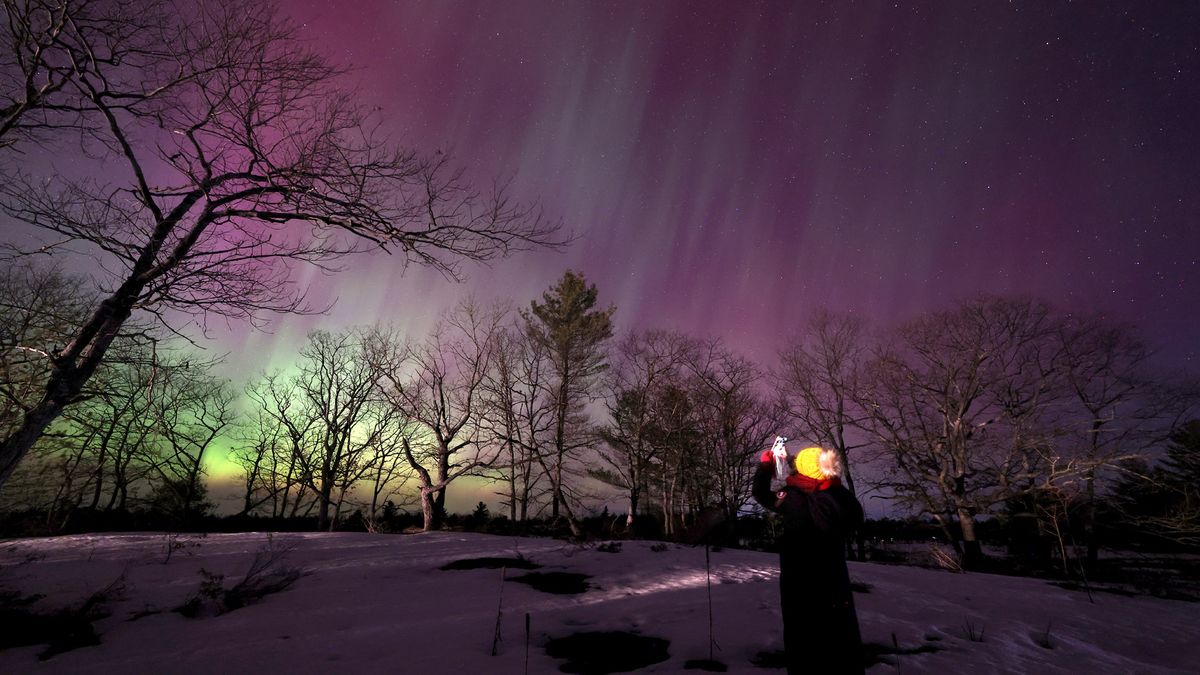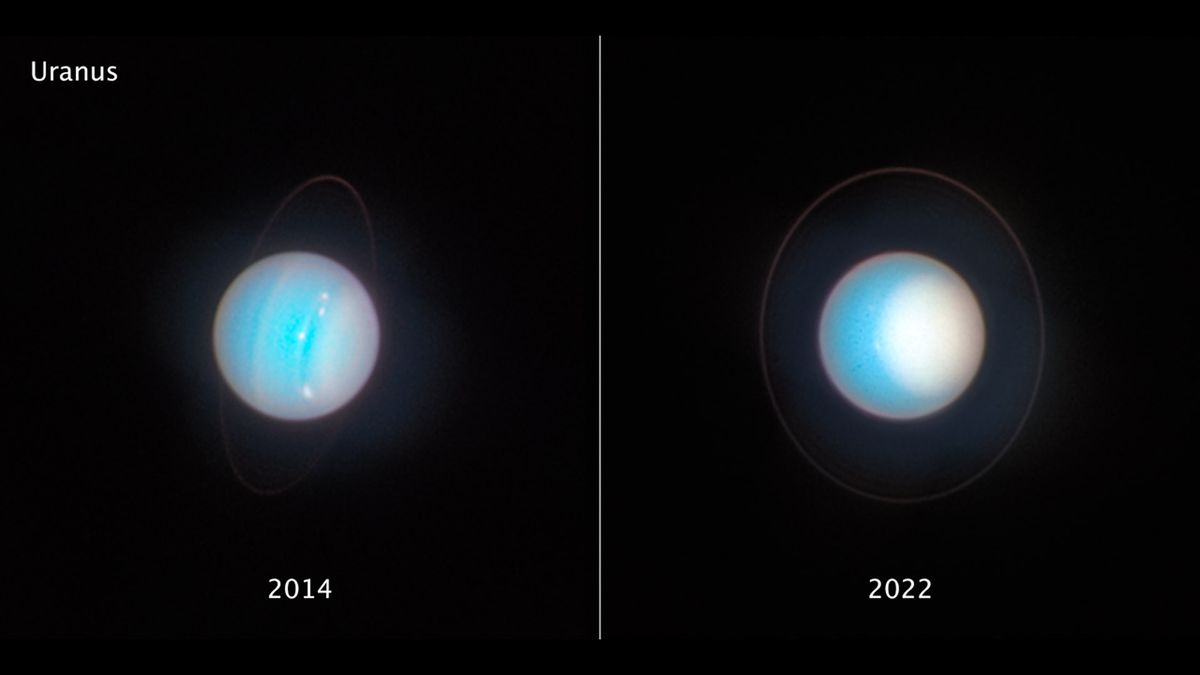A shock photo voltaic storm supercharged auroras throughout the U.S. and Europe final night time (March 23), with sightings of the colourful shows reported from as far south as New Mexico and Arizona.
The storm, categorized as a extreme G4 on the 5-grade scale utilized by the U.S. Nationwide Oceanic and Atmospheric Administration (NOAA), even pressured Rocket Lab to delay a launch of its Electron rocket for 90 minutes. Oddly, space weather forecasters did not see the storm coming, because it was brought on by a stealthy photo voltaic eruption.
Whereas essentially the most gorgeous polar mild photos got here from the standard aurora haunts in Canada, northern Europe and Alaska, ingenious photographers outfitted with delicate cameras have been additionally capable of seize the mesmerizing mild reveals at somewhat uncommon areas at a lot decrease latitudes.
Associated: Where to see the northern lights: 2023 aurora borealis guide
Photographer Lauren Thompson took to Twitter to share a sequence of shock snaps taken throughout an evening of aurora chasing in New Mexico.
“I can’t imagine we’re seeing this in New Mexico! Presently someplace between Pecos and Las Vegas!” she said in one tweet.
I can’t imagine we’re seeing this in New Mexico! Presently someplace between Pecos and Las Vegas! pic.twitter.com/iXHIn4Msa3March 24, 2023
Thompson wasn’t alone on this southern state to report aurora sightings. Award-winning storm chaser and climate photographer Tim Baca shared his personal shot of a fiery wall of purple glow rising above the horizon.
“Central New Mexico Northern lights proper now!,” he mentioned in the tweet.
Central New Mexico Northern lights proper now! #northernlights #AuroraBorealis #nmwx pic.twitter.com/tqisbpyKxzMarch 24, 2023
Photographers in Arizona, North Carolina and Oklahoma additionally captured aurora shows, and so did many throughout the northern states.
“Finest night time of my life. Close to Watertown, South Dakota,” tweeted Alex Resel.
Auroras are triggered by interactions between charged particles streaming from the solar within the type of solar wind and molecules in Earth’s atmosphere. As a result of the planet’s magnetic discipline traces funnel the photo voltaic particles towards the poles, most aurora shows are solely seen at very excessive latitudes. Nonetheless, when highly effective bursts of photo voltaic wind hit the planet directly, similar to these launched throughout expulsions of plasma often known as coronal mass ejections, auroras can spill over considerably within the path of the equator. Throughout essentially the most intense photo voltaic storms in recorded historical past, for instance, aurora sightings have been reported as far south because the Bahamas.
Area climate forecasters initially predicted a reasonable G2 geomagnetic storm to happen on March 23 and March 24. Such a storm would have invigorated auroras largely at somewhat excessive latitudes. That prediction was based mostly on flows of quick photo voltaic wind that forecasters knew have been emanating from a gap within the solar’s magnetic discipline often known as a coronal gap. The G4 storm that arrived as a substitute was essentially the most highly effective geomagnetic storm of the present solar cycle, the 11-year ebb and circulation within the technology of sunspots, flares and eruptions.
This photo voltaic cycle, the twenty fifth since information started, will attain its most in two years, which implies we’re doubtless heading right into a interval of extra intense photo voltaic storms and subsequently extra breathtaking aurora shows.
Geomagnetic storms, nonetheless, aren’t at all times a deal with to people. The extra intense ones could cause energy blackouts and severely have an effect on operations of orbiting satellites.
Comply with Tereza Pultarova on Twitter @TerezaPultarova (opens in new tab). Comply with us on Twitter @Spacedotcom (opens in new tab) and on Facebook (opens in new tab).



